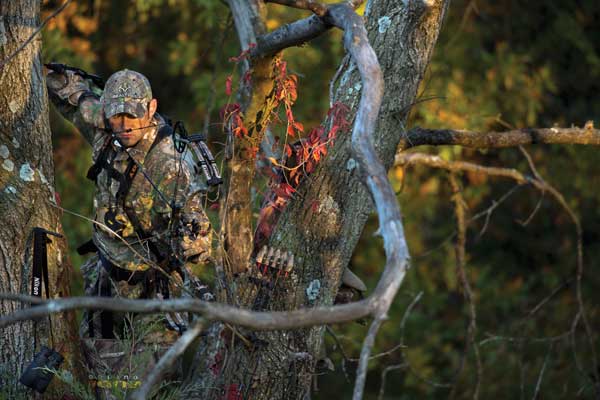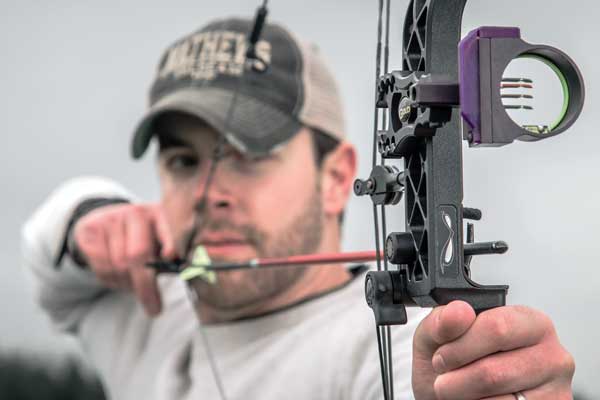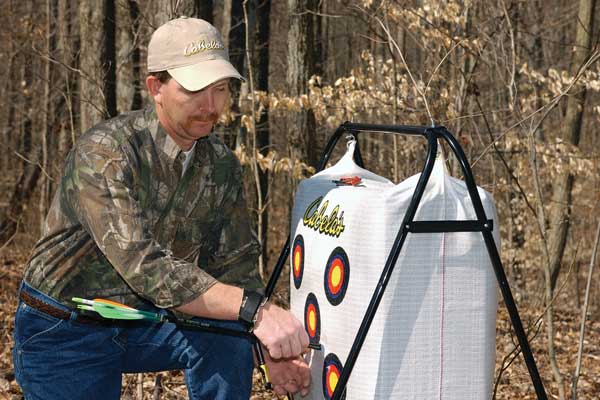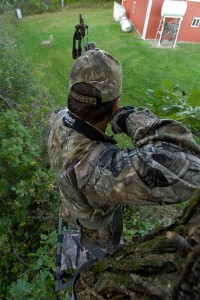
When I was in my early 30s, I spent one spring and summer trying to get into the best shape of my life. I worked out in the gym three days per week, and every evening I would run a mile, rest for a minute and then run back home - as fast as I could. My initial goal was modest; to be ready for a long fall of mountain and tundra hunting. But once I got well into the program, the effort became its own reward.
When I hit the four-month mark, I crossed a threshold. My capacity for work seemed to become almost infinite. I just kept getting faster and stronger every day. I learned my limits were much farther than I had thought.
Unfortunately, this lesson came well after I had quit all serious competitive sports. Young people in their prime aren`t consistent enough in their efforts. A long-time football coach I know often says, [It is hard to put a wise head on young shoulders." I wish I had known when I was 15 what I learned at 32.
While it took four months before I started to see my own fitness potential, we are fortunate that archery is much more time friendly. With bow in hand, we can reach 90 percent of our potential in just 10 weeks if we approach the effort with a good plan and dedicate 30 minutes per day.
In this feature, I will walk you through the 10-week plan that will give you a new appreciation for how good you can really be. I`ll start with the quick fixes and finish with the lessons that will last a lifetime.
Week 1 – Get the Right Gear
If you have to think about what you are doing to do it correctly, you are in trouble when the arrival of a buck or bull overloads every brain cell.

You need to be able to take instinctive action. You want your bow to be an extension of your mind, so any serious gear changes need to be [baked in." That takes many hours of shooting, especially if the change involves your feel or sight picture.
Log plenty of hours with the new gear during the first week. Don`t worry too much about where your arrows hit. That will come soon enough. Just get used to the new look and feel of the shot.
The quick fixes: The number one problem I see with casual archers is poor follow-through. They move the bow dramatically right after the shot. Unfortunately, this movement starts to sneak into the shot itself and the archer becomes very inconsistent.
The payoff for small changes can be huge. I once watched a friend go from shooting 10-inch groups at 20 yards to shooting 2-inch groups at that distance simply by focusing on holding his form (mostly his bow arm) steady until the arrow hit the target. Try it. You may be shocked how much it helps your shooting.
Number two is a soft bow hand. If your bow hand is tense at all, you will shoot inconsistently. Keep that hand very relaxed, with fingers dangling all the way through the shot.
Change the way you aim: Most sights on the market today have round pin guards. Center the entire pin guard inside a large, quarter-inch diameter peep sight for improved shooting.
Some archers think you will still subconsciously center the pin you are aiming with during the excitement of shots at game. My experience doesn`t agree. But you do need to make the change now - in week one - as soon as you can.
The upside of this aiming method is twofold. First, the large peep permits plenty of light to reach your aiming eye for good visibility when shooting early and late in the day.
Second, since you are centering the entire pin guard on every shot, you don`t have to move the peep up and down in front of your eye to center individual pins for shots of varying distances. You can select your most comfortable anchor point and use it on every shot. You will really appreciate that.
Week 2 – Learn the Surprise Release
If you trigger your release aid with a conscious [Now!" command, you are almost surely fighting target panic. Invariably, you will someday end up stabbing at the release`s trigger as the pin pauses near the spot or you will find it very hard to move the pin onto the spot; it will lock up underneath.

This is a very inconsistent, stressful way to shoot and will limit your success. I used to command the shot and I never felt confident when hunting until I learned to create a surprise release.
You will almost certainly need to use a training aid, a back-tension release, to learn how to float the pin around the spot as you slowly cause the bow to fire. Eventually, you will be able to do this with just about any release by simply working the trigger slowly. But at first you will need help to break old habits.
If you do nothing else during the off-season this year, make a commitment to learn to shoot a bow using a surprise release method. You will forever be happy you did.
Work out your pre-shot routine: Adrenaline and fresh thinking aren`t drinking buddies - they don`t even like each other. To combat the tendency to melt down, come up with a list of steps you need to take on every shot. Include all the decisions you have to make when hunting, but keep the list as short as possible. Now, practice these steps on every shot you take on the range, even if the steps seem irrelevant. You need to make the routine automatic.
Weeks 3 and 4
Now you have the new gear and the new surprise shooting method in place. Sure, you still need time on the range before the new system will gel, but it is also time to shift your focus to the next goal.
Shoot for Strength: Whenever you start up your practice program after a layoff, spend the first two weeks rebuilding your shooting muscles.
Before you can relax enough at full draw to let the pin float, you must get your shooting muscles in shape. Eventually your pin will stop dancing and slowly float around the spot.
Shoot 50 to 100 arrows per day during this two-week period. Don`t worry about tight groups; just maintain solid form and build strength.
Weeks 5 and 6 – Practice Your Focus
After you have gained the needed strength, it`s time to reduce the number of arrows you shoot and concentrate on making every one count. Most bowhunters shoot too many arrows per practice session once they have their strength. Quality is much more important than quantity in weeks five and six. Twenty or 30 excellent shots, with total focus on each one, is a good number.

Don`t get lazy on a single arrow. Use every step of your pre-shot routine on every shot. The habits you build during this phase of your preparation establish the instincts that will take over when hunting.
Fine-tune your form: Focus on the fundamentals on every shot: precise hand placement on the grip with the force right in line with your forearm bone, a very relaxed hand, slight bend in the bow arm, relaxation through the whole body, good posture.
One thing I have learned the hard way is that I have to focus on the way I pull through the shot. If I am not careful, it is easy for me to pull too far behind me and create side force on the string with my release aid. This causes poor arrow flight and makes my bow twist as I follow through.
Be sure you pull straight away from the target and pay attention to what the bow does after the shot. It should jump straight forward with no tendency to turn.
Weeks 7-9 – Stretch Your Skills
You should be on cruise control now, but don`t get complacent or you will drift into bad habits. One of the best ways you can keep improving is to practice at longer ranges than you plan to shoot when hunting.
For example, if you want to become deadly accurate at 30 yards, do most of your practice at 40 and 50 yards. You will keep improving automatically. When you step up to 30 yards, the shot will seem ridiculously easy.
Spend your practice time jumping from short to long shots and back, but invest at least 25 percent of the time at a distance that is 20 yards beyond your hunting maximum.
Week 10 – Keep It Real
It is time to practice with hunting gear in real hunting settings. Hunting arrows don`t always fly the same as arrows tipped with fieldpoints. If you will be using replaceable-blade broadheads, test shoot every arrow before it goes into your quiver. Determine where the hunting arrows are grouping. If necessary, move your sight pins to bring them back on target.

Read more: http://www.bowhuntingmag.com/tactics/10-week-bowhunting-training-routine/#ixzz5Gk2EPclr
Crossbow cocking devices vary in styles, from traditional (manual), rope, and crank. The purpose of a cocking device is to aid in pulling the string back and balance tension. This prevents the arrow from swaying by creating a forward force.
When choosing a cocking device, consider if the activity (competition or hunting) to reach desired results and performance!
Crossbow Cocking Device,Handle Rope Cocking Device,Crossbow Device,Outdoor Crossbow Cocking
CONQUEROR OUTDOORS 01- (562) 524-2002 , http://www.conquerorcrossbow.com